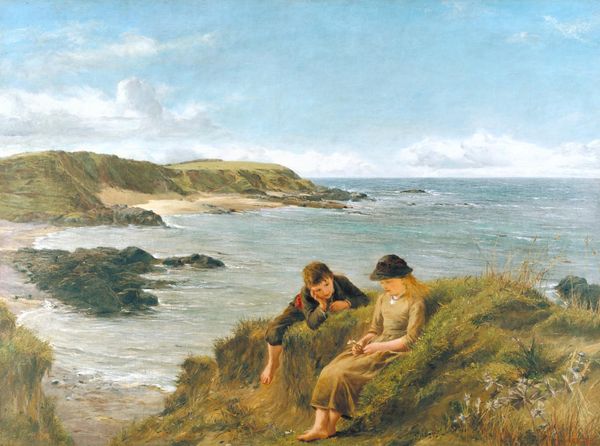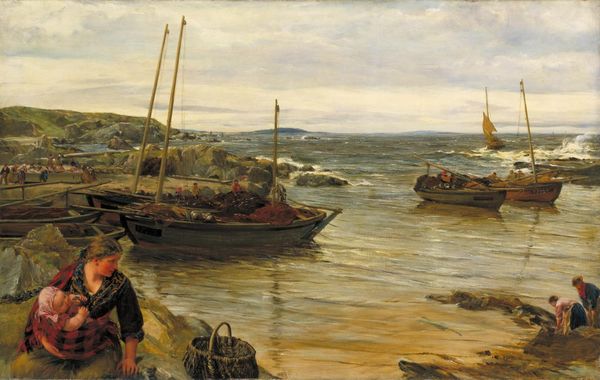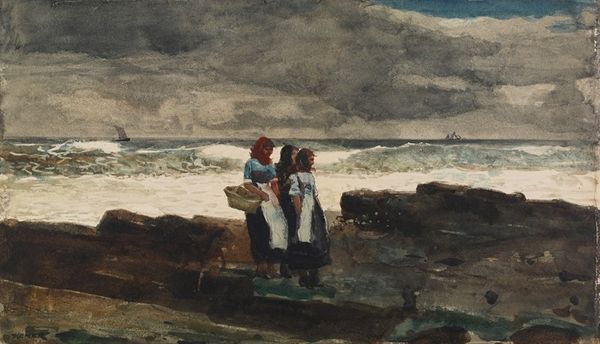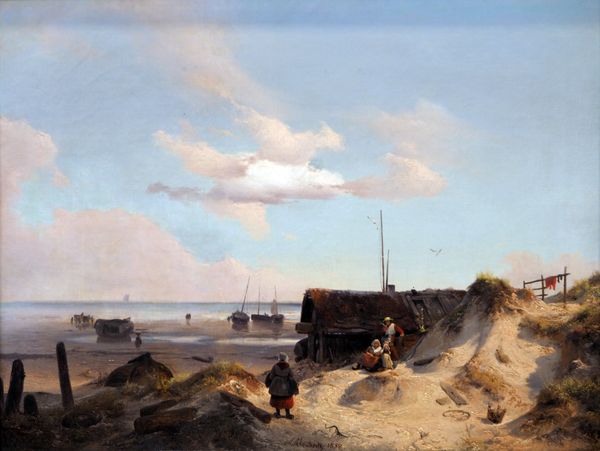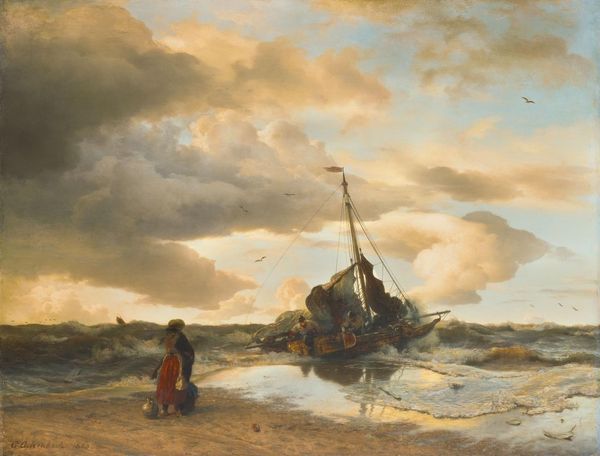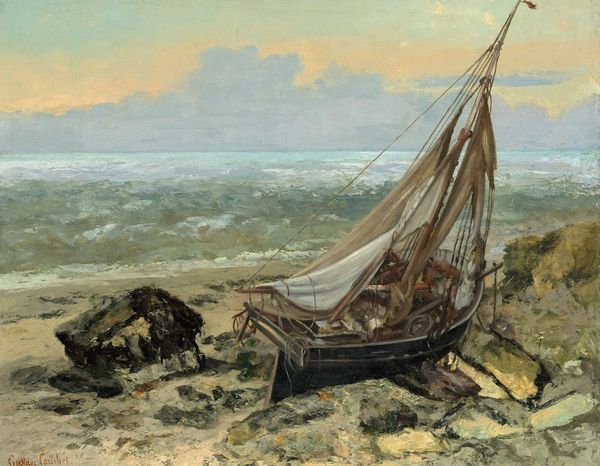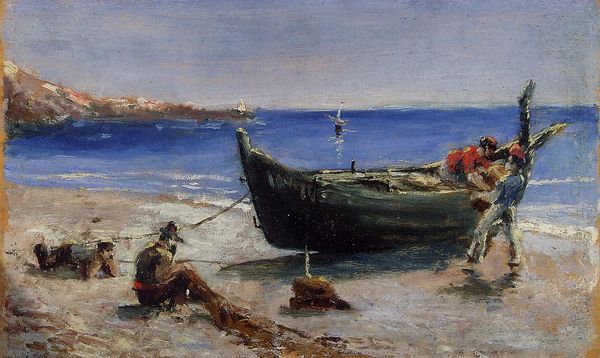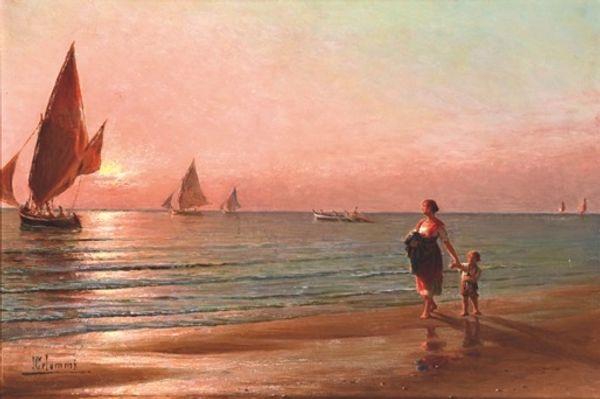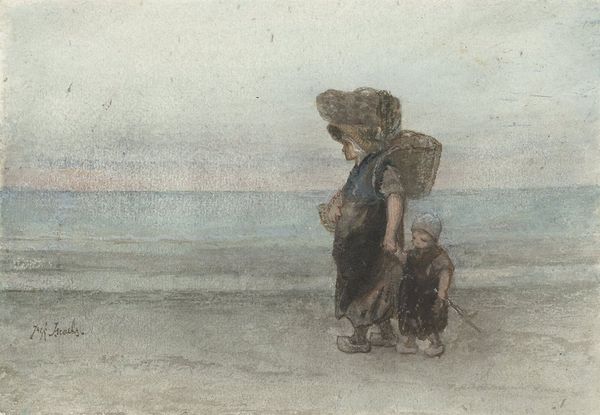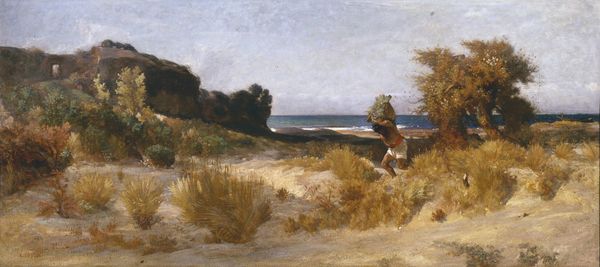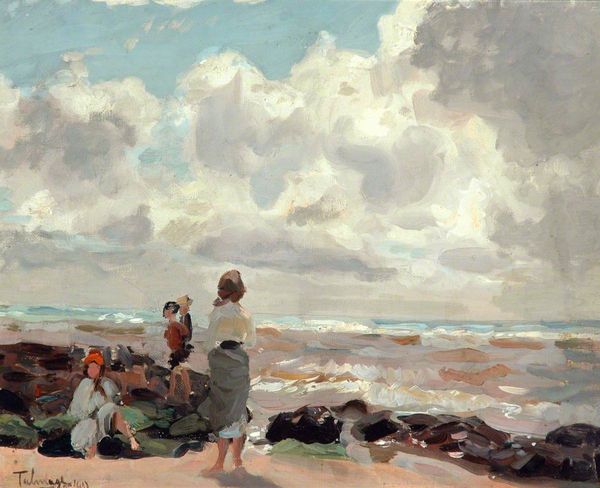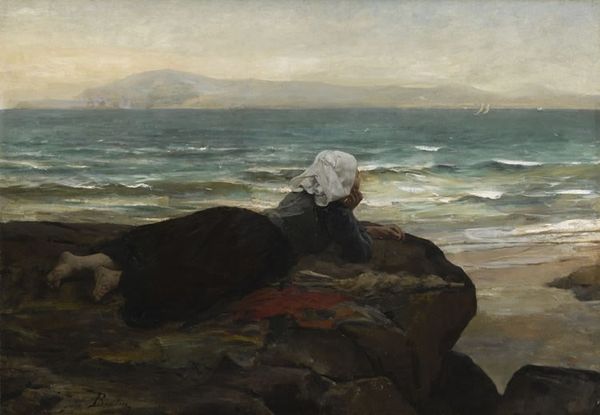
Dimensions: frame: 1033 x 1540 x 160 mm, 39 kg support: 730 x 1238 mm
Copyright: CC-BY-NC-ND 4.0 DEED, Photo: Tate
Editor: Here we have James Clarke Hook's "The Seaweed Raker", which resides at the Tate. The figure seems so pensive, almost lost in thought against the vastness of the sea. What does this scene evoke for you? Curator: These depictions of rural labor, seemingly picturesque, often romanticized the harsh realities of working-class life for an urban audience. Consider how such images served to reinforce idealized notions of the countryside. What isn't shown here? Editor: I guess the hardships are glossed over. It prompts me to think about who this artwork was really *for*. Curator: Precisely. Understanding the intended audience and the social context reveals much about the painting's purpose. Something to keep in mind. Editor: That’s a perspective I hadn't considered before. Thanks!
Comments
Join the conversation
Join millions of artists and users on Artera today and experience the ultimate creative platform.
tate 8 months ago
⋮
James Hook began to paint the sea and coast in the mid 1850s. This was a change of direction in his art. His earlier paintings had been of modern Italian history, and reflected his commitment to Italian nationalism that lead to his taking part in the revolution of 1848 in Venice. In contrast his marine paintings were often of sentimental subjects with children, and by the 1880s corresponded to a widespread popular taste in London. He went to Brittany as well as the English coast to find subjects to paint, and the young woman gathering seaweed in this picture is likely to have been seen on the north coast of France. Gallery label, September 2004
